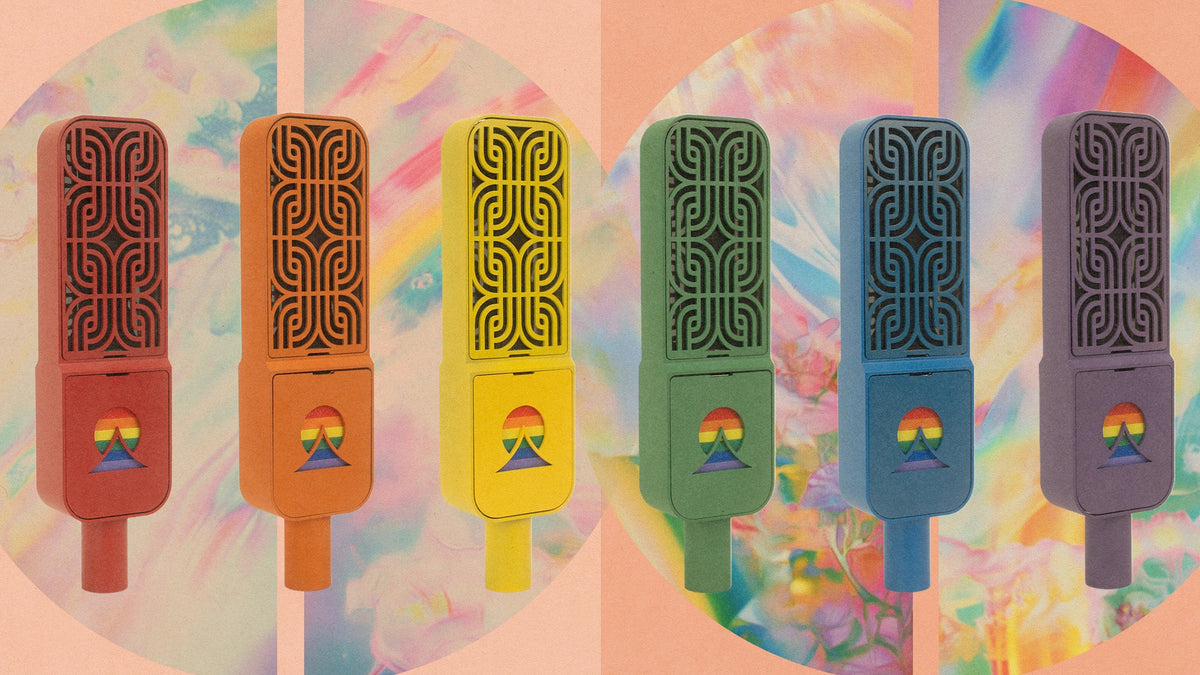
Not Another Rainbow Microphone
|
|
Time to read 2 min
|
|
Time to read 2 min
It’s June, and the rainbow is out in full force.
Logos change color. Limited edition merch rolls out. There’s glitter on everything from sneakers to mouthwash. And while some of it’s done with care, a lot of it feels like the same tired idea: slap a rainbow on it and call it pride.
So when we decided to add our Pride microphones to the permanent Ohma line, we knew what it might look like from the outside: another rainbow product, another campaign. Another flash of color with no real depth behind it.
But this isn’t that.
Because what we’re doing here isn’t just about Pride. It’s about queering the idea of what a microphone even is.
Let me explain.
In queer theory (and honestly, in lived experience) to queer something means to trouble it. To bend it. To stretch it past the borders of what it was told it could be.
To queer is to ask, “What if it didn’t have to look like this?”
To queer is to refuse invisibility. To queer is to take something fixed and make it feel. And yes, you can queer an attitude. A relationship. A church pew. A love song. A business plan. A Tuesday.
You can even queer a microphone.
Because microphones, like most tools, were designed within a culture. That culture didn’t imagine softness as strength. It didn’t imagine color as language. It didn’t imagine a mic as a site of gender, power, presence, or permission. It imagined it as black, gray, silver.
Straight. Silent. Serious. Invisible.
We imagined something else.
Each color on the original Pride flag meant something. Still does.
Red for life. Orange for healing. Yellow for sunlight. Green for nature. Blue for serenity. Purple for spirit.
Later versions added black and brown for marginalized queer communities of color, and pink, white, and baby blue for trans folks. And together, these colors aren’t just a spectrum. They’re a methodology. A reminder that queerness isn’t one thing. It’s everything that blooms outside the default.
So when we made the Pride mic line, it wasn’t about picking a few cute colors and calling it done. It was about letting each mic carry an ethos. Life. Healing. Spirit. Serenity. The ability to transmit not just sound, but self.
Some mics vibrate with defiance. Some with joy. Some with softness so subtle you have to listen twice. All of them are precise, all of them are emotional.
Because queerness doesn’t mean chaos. It means complexity with intention.
Sounds odd, right?
What could be more opposite of “queer” than a microphone?
A mic doesn’t flirt. It doesn’t shapeshift. It’s engineered to behave, to be consistent, to disappear.
But here’s the thing: a microphone is the thing you speak through. And if the tool you’re speaking through was never built to reflect who you are, it will always distort the signal no matter how technically accurate it is.
So we started building mics that didn’t erase us. That held our stories without flattening them. That looked like us. Felt like us. Reflected back something true. We learned:
You can queer function.
You can queer sound.
You can queer precision.
You can queer the whole damn signal chain.
You can queer a microphone.
These Pride mics aren’t here for a moment. They’re part of our line now because they’re part of our practice. Not a gesture. Not a sale. Just a truth we keep building toward:
That expression deserves tools. That form carries meaning.
That you can be exact and emotional, strange and serious, visible and still valid.
So no, this isn’t just another rainbow product. This is what happens when queerness builds the tools. When we shape the sound from who we are, not in spite of it.
And we’re just getting started.
More Ohma